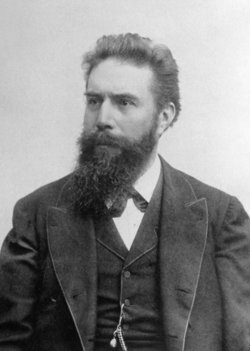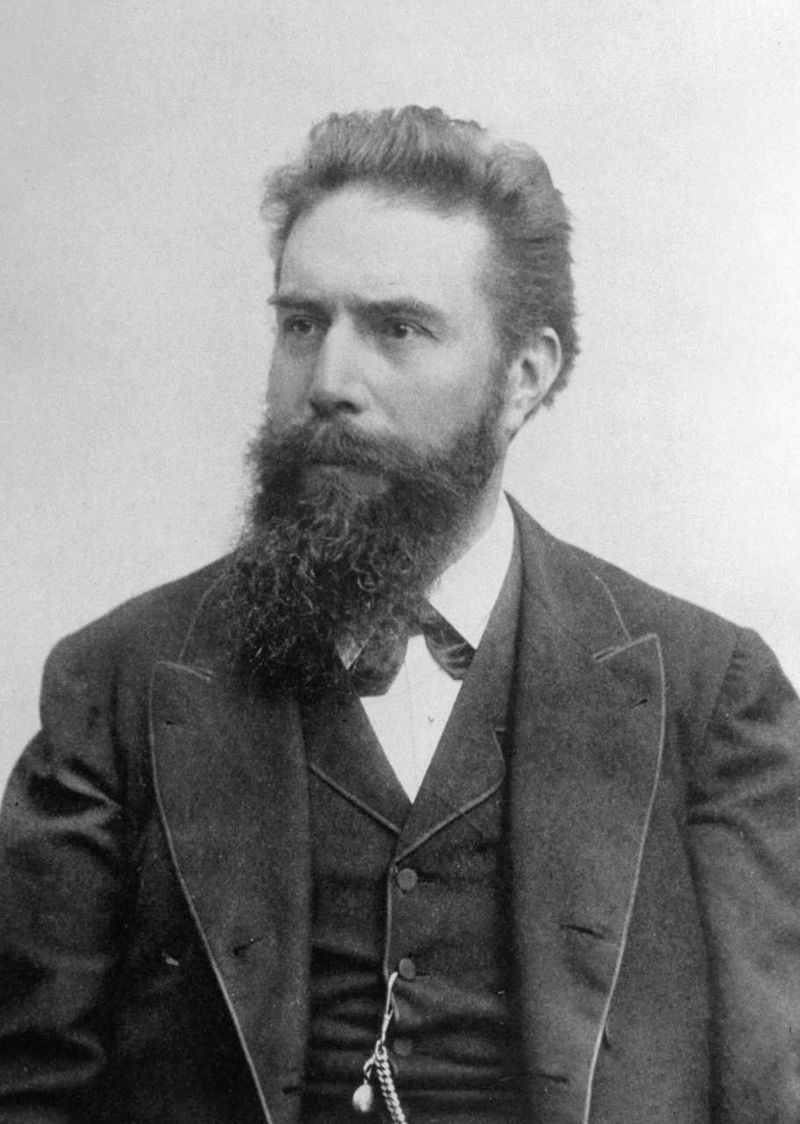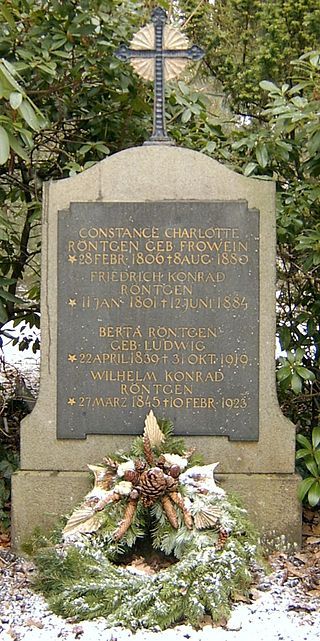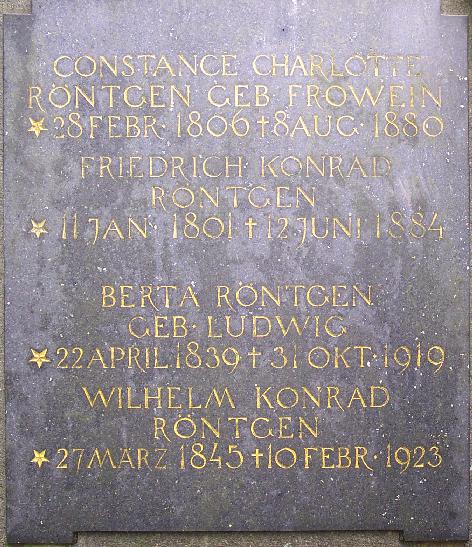Nobel Prize Laureate Scientist. He received the 1901 Nobel Prize in Physics, according to the Nobel Prize committee, "in recognition of the extraordinary services he has rendered by the discovery of the remarkable rays subsequently named after him." He was the discoverer of electromagnetic radiation, commonly known as X-ray. He received the very first Nobel Prize ever awarded in the category of Physics. Born Wilhelm Conrad Röntgen into a wealthy family, his family moved from Germany to Holland when he was age three, receiving his early education there. After high school, he attended a Technical School for almost two years, but did not graduate as he was expelled for drawing a caricature of a teacher, thus making it impossible to graduate from a university in the Netherlands. At that point in 1865, he traveled to Switzerland, passed the college entrance exam and began studying mechanical engineering at the University of Zurich. After graduating with a PhD in 1869, he followed Professor August Kundt to Germany, founding the new Kaiser-Wilhelms University at Strasbourg. He was a lecturer there before becoming a professor in 1875 in what is now the University of Hohenheim. In 1876, he returned to Kaiser-Wilhelms University at Strasbourg as a professor of physics. He became Dean of the Faculty of Physics at the University of Giessen, and after 1900 he was Professor of Experimental Physics at the University of Munich of Bavaria. He had planned to immigrate to the United States and had a position at Columbia University in New York City, but with the dawn of World War I, his plans changed, thus staying in Germany the rest of his life. In 1900 he received from Columbia University the Barnard Medal for Meritorious Service to Science. On November 8, 1895, he made his x-ray discovery. His first of three papers on the x-ray discovery, "On A New Kind of Rays," was published on December 28, 1895. On January 5, 1896, an Austrian newspaper reported his discovery of a new type of radiation. The British Royal Society awarded him the Rumford Medal in 1896, jointly with Philip Lenard, who became the 1905 Nobel Prize in Physics recipient. Besides the Nobel Prize, he received the Matteucci Medal from Italy in 1896, the Elliott Cresson Medal from the Franklin Institute in Philadelphia on 1897, and became a foreign member of the Royal Netherland Academy of Arts and Sciences. The element number 111 roentgenium (Rg) was named in his honor. Against his father's wishes, he married a lady from a humble background, staying married for 47 years and the couple adopted her orphaned niece. Since he inherited from his father's estate in 1884, he donated his monitory Nobel Prize to the Julius Maximilian University of Würzburg. World Radiography Day is recognized on November 8th. His birthplace is a museum in Lennep, Germany, known as the "Geburtshaus" or "birth house" of Wilhelm Conrad Roentgen as he is known in the United States.
Nobel Prize Laureate Scientist. He received the 1901 Nobel Prize in Physics, according to the Nobel Prize committee, "in recognition of the extraordinary services he has rendered by the discovery of the remarkable rays subsequently named after him." He was the discoverer of electromagnetic radiation, commonly known as X-ray. He received the very first Nobel Prize ever awarded in the category of Physics. Born Wilhelm Conrad Röntgen into a wealthy family, his family moved from Germany to Holland when he was age three, receiving his early education there. After high school, he attended a Technical School for almost two years, but did not graduate as he was expelled for drawing a caricature of a teacher, thus making it impossible to graduate from a university in the Netherlands. At that point in 1865, he traveled to Switzerland, passed the college entrance exam and began studying mechanical engineering at the University of Zurich. After graduating with a PhD in 1869, he followed Professor August Kundt to Germany, founding the new Kaiser-Wilhelms University at Strasbourg. He was a lecturer there before becoming a professor in 1875 in what is now the University of Hohenheim. In 1876, he returned to Kaiser-Wilhelms University at Strasbourg as a professor of physics. He became Dean of the Faculty of Physics at the University of Giessen, and after 1900 he was Professor of Experimental Physics at the University of Munich of Bavaria. He had planned to immigrate to the United States and had a position at Columbia University in New York City, but with the dawn of World War I, his plans changed, thus staying in Germany the rest of his life. In 1900 he received from Columbia University the Barnard Medal for Meritorious Service to Science. On November 8, 1895, he made his x-ray discovery. His first of three papers on the x-ray discovery, "On A New Kind of Rays," was published on December 28, 1895. On January 5, 1896, an Austrian newspaper reported his discovery of a new type of radiation. The British Royal Society awarded him the Rumford Medal in 1896, jointly with Philip Lenard, who became the 1905 Nobel Prize in Physics recipient. Besides the Nobel Prize, he received the Matteucci Medal from Italy in 1896, the Elliott Cresson Medal from the Franklin Institute in Philadelphia on 1897, and became a foreign member of the Royal Netherland Academy of Arts and Sciences. The element number 111 roentgenium (Rg) was named in his honor. Against his father's wishes, he married a lady from a humble background, staying married for 47 years and the couple adopted her orphaned niece. Since he inherited from his father's estate in 1884, he donated his monitory Nobel Prize to the Julius Maximilian University of Würzburg. World Radiography Day is recognized on November 8th. His birthplace is a museum in Lennep, Germany, known as the "Geburtshaus" or "birth house" of Wilhelm Conrad Roentgen as he is known in the United States.
Bio by: Linda Davis
Family Members
Advertisement
See more Röntgen memorials in:
Explore more
Sponsored by Ancestry
Advertisement








